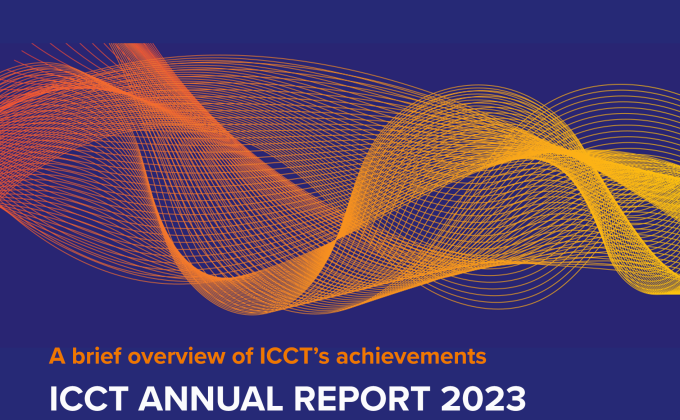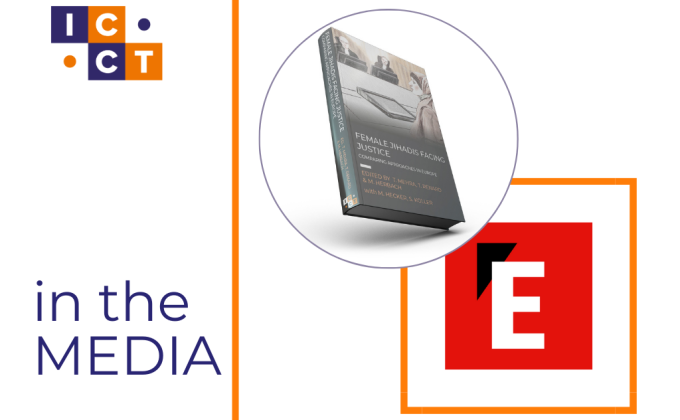Introduction
These days, the foreign fighters phenomenon is omnipresent on the agenda of police officers, prosecutors, de-radicalisation experts, researchers, policy makers, municipalities, governments, international organisations and think and do tanks. The problem is too complex and multi-faceted to analyse in just a few pages, so the following commentary, based on a speech presented to the Council of Europe’s Committee on Political Affairs and Democracy on 16 March 2015, should merely be seen as a quick and elementary snap-shot, allowing people with little time to swiftly absorb some basic features of the current problem.
This commentary will address four points: 1) General information on the scale of the phenomenon; 2) Root causes; 3) Implications for countries/societies of origin and 4) Responses. The focus will be on the root causes – since we need to understand the phenomenon first – and the responses – because we are all looking for solutions here.
The four points
1) General information on the scale of the phenomenon
Almost every article or contribution on foreign fighters starts with the sentence that this is not a new phenomenon and indeed, it’s not. Osama Bin Laden is probably one of the most famous former foreign fighters. What is new these days is the scale of the threat. On 26 January of this year, Peter Neumann, Director of the International Centre for the Study of Radicalisation and Political Violence, wrote that the foreign fighter total in Syria/Iraq now exceeds 20,000, surpassing the Afghanistan conflict in the 1980s. Nearly a fifth of this number, almost 4,000, consists of residents or nationals of Western European countries. Neumann notes that this nearly doubles his organisation’s estimate of December 2013, which means that “the flow of Westerners travelling to Syria is [indeed] increasing at an alarming rate”. Although the problem is of course most serious for Syria’s neighbouring countries – with up to 11,000 foreign fighters, the Middle East remains the dominant source of foreigners in the conflict – the focus of this commentary will be on the European context. Neumann notes that the largest European countries – France, the UK, and Germany – also produce the largest numbers of fighters (1,200, 500-600 and 500-600), but relative to population size, the most heavily affected countries are Belgium (440, up to 40 per million population), Denmark (100-150, up to 27 per million population), and Sweden (150-180, up to 19 per million population).
It is important to underline there is no generally accepted definition of foreign fighters though. Various documents, including the important UN Security Council Resolution 2178, speak of foreign terrorist fighters, but of course, not all foreign fighters are terrorists (nor are they all fighting, women are generally not involved). In addition, where the definition of foreign terrorist fighters is used, there continues to be a lack of clarity as regards the definition of terrorism, which also Resolution 2178 does not solve. Indeed, what is a terrorist? In some jurisdictions, this is an individual committing specific acts of terrorism, like targeting the civilian population. For others, it may suffice if the person in question joins a terrorist organisation, such as Al Nusra or ISIS, regardless of that person’s individual acts. It is important to realise this – that countries use different definitions of terrorism – and that these different versions will be used when implementing UNSC Resolution 2178. There is also a risk of abuse when too broad definitions are used.
More practically, it is of course extremely difficult to establish and prove what people are doing in Syria or Iraq, in view of the chaotic situation there, unless they film their crimes and put the videos online.
2) Root causes
Like a colleague aptly stated: there are many ingredients for a person to radicalise, but the recipe is always different. Indeed, each radicalisation process is to some extent unique and individuals will go to Syria for different reasons. That’s why it is also so difficult to come up with the solution to the problem. This point will be addressed later, when discussing the responses.
As to these different ingredients, these can, for instance, be of a personal, ideological or religious nature.
On the personal level, people may feel they lack a future in their country of origin and that going to Syria might constitute a perfect “reset” of their not-so-promising lives. People with a poor social network can, in their own eyes, transform relatively quickly from a mere nobody to a powerful warrior, respected/feared by others. They can become part of a “band of brothers/sisters”, belonging to a group (comradery), and finally do something interesting and exciting with their lives. Psychological health issues may also play a role in this context.
Ideologically, many travellers may simply be angry or extremely disillusioned, and on many occasions for valid reasons. Angry for what is happening in the Middle East (the brutal way in which Assad crushed the initial protests), and disillusioned as a result of a Western World not doing much about it or even worsening the situation (see the illegal US intervention in Iraq in 2003).
As to the religious dimension, young Muslims may be struggling with the big questions in life – why am I here, what is my destiny – but may decide not to go to the Mosque and Imam for answers. They might create their own DIY Islam in basements, facilitated by recruiters, and via internet – an internet that can be as un-nuanced as you want and thus very attractive for persons who want clarity and direction.
In addition to all of this, the political climate in these potential foreign fighters’ countries of origin may be counterproductive. Statements from right-wing politicians like Dutch MP Wilders might arguably push some youngsters away from Dutch society. Discrimination on the labour market is equally problematic and may increase the problem that people, rightly or wrongly, feel excluded from society and look for another place to continue their lives.
What is also important to stress is that motivations may change, just like the conflict is constantly developing. People may initially have gone to Syria for ideological reasons, namely to defend helpless citizens from a brutal dictator, but this may change into assisting ISIS’s caliphate. Others might end up, perhaps also for practical reasons (because they may no longer have financial resources), in criminal organisations, involved in the trafficking of arms, drugs and people.
The reader will notice that the word “may” is often used here. Thus, there is a need to develop a far better understanding of drivers/push & pull factors of foreign fighters.
3) Implications for countries/societies of origin
Clearly, the impact of the conflict in Syria and Iraq is most serious for these countries themselves, in terms of fear, destruction, loss of innocent lives etc. Also neighbouring states, which have to accommodate hundreds of thousands of refugees, and which may be confronted with a spill-over of the conflict, suffer greatly from the war. However, for Europe, the biggest fear is undoubtedly that we face a Madrid or London-style of attack from foreign fighters returning to their country of origin. The question is how big the risk is that such an attack occurs? “Of all of those who have been convicted of jihadi terrorism related activities in Europe between 2001 and 2009, about twelve percent had been abroad prior to their attack, either for ideological training, military training or participation in foreign conflicts". Even though this percentage is relatively small, the absolute numbers are rising, and with that the chance of an attack, in view of the applicability of that same percentage to higher numbers. Furthermore, it should be realised that, all calculations based on percentages aside, it will in the end only take one returnee to execute a successful attack, as exemplified by Merah in Toulouse and Nemmouche in Brussels.
In addition to that, we should also not underestimate the risk of people that do not even go to Syria/Iraq, but that nevertheless sympathise with the violent jihad. These extremists might engage in copycat crimes at home that can also cause serious harm, without having crossed any borders, as was the case in recent incidents and attacks in Australia, Canada and Denmark. In addition to lone actor attacks, there is also the risk of the formation of new or the strengthening of existing terrorist networks. Al Qaeda was basically established by a network of former foreign fighters at the end of the Soviet intervention in Afghanistan in the late 1980s, but already now, we have more foreign fighters than after ten years of Afghan war. Networks are now being formed between individuals (either within Iraq and Syria or with individuals residing in other countries, including their home countries) and even between organisations as such (see for instance Boko Haram’s pledge of allegiance to the Islamic State).
4) Responses
To stem the flow of foreign fighters to Syria and Iraq and to counter the risk returnees may pose, there are various responses available, at both the national and international level. These include de-radicalisation programmes, criminal prosecutions and administrative sanctions, including the removals of passports and even the withdrawal of citizenship. Even though on paper, there is currently a greater focus on the preventative side than in the past (see again Resolution 2178, which also refers more to international law), it seems that in practice, states still mainly want to show muscles. Not to the extent of the situation directly following 9/11, but we must still be careful not to fall in the post 9/11 trap. Obama’s remarks on Guantánamo are exemplary of the difficulties that state may face as a result of too repressive policies.
It is arguably not wise to say that here, in Europe, we are at war with the terrorists, like French PM Valls has done. This would, after all, pay too much credit to the terrorists, since they want to be seen as combatants, which they are not since they kill unarmed civilians. Rather, it is recommended that they are framed as mere criminals, who should be dealt with, in a sober way, via, inter alia, the regular criminal law system, hereby of course taking into account the specifics of the case, including the fact that many fighters are very young. If you follow the terrorists in their war rhetoric, you do exactly what these terrorists want you to do (so you shouldn’t do that).
The criminal law approach is obviously just one of the many possible responses and clearly a repressive approach alone will not be effective. In fact, it may even be counter-productive. There must be a balance of the various measures, and states should arguably focus more on prevention policies, instead of fighting symptoms, which do not really address the underlying issue. Preventive measures, however, will contribute to effective policies in the long term, and the success of these “soft” measures is difficult to measure. It’s easier to show that the police arrested a certain number of suspects and that courts convicted a certain number of people, but how can you prove the negative? How can you prove that someone did not radicalise? Indeed, it’s almost impossible to prove the success of prevention. However, that doesn’t mean that we should not invest in this, as the indirect effects certainly address the root causes, which contribute to a sustainable approach of dealing with – or perhaps “containing somewhat” would be a better formulation here – this problem in the long-term.
To illustrate the potential preventive effects of certain measures, one can distinguish solutions available at the individual level (think of an emergency phone line for parents with radicalised children), at the group level (think of a credible counter-narrative, preferably from a former and disillusioned foreign fighter), but also at the level of the state. States have to make serious efforts to eradicate discrimination in the labour market. They have to offer jobs, opportunities and the chance for youngsters to build up a future: make them feel at home and included. Too often, statements by political leaders are made that undermine that idea. The mayor of Rotterdam has stated that if Dutch citizens want to leave for Syria and Iraq, they should go, but then “there is no way back. Hand over your passport and risk getting bombed”. And the Dutch prime minister recently agreed with a statement during an election debate that it would be better if Dutch jihadists who travel to Syria died there rather than return to the Netherlands. Such statements arguably will only increase the problem.
What is also important to stress is that it appears that several repressive measures are nowadays proposed and adopted, without really assessing whether they are effective or necessary. An example is the call for new terrorism legislation, while the necessity is dubious, and the inadequacy of the existing legislation not proven. Omar H., suspected of preparing crimes in the context of jihad travel to Syria, was, for instance, convicted in first instance in the Netherlands on the basis of ordinary criminal law, not on terrorism provisions. Additionally, there is the measure of taking away passports and even citizenship. Is this really necessary and effective or is it simply a symbolic measure, meant to brand the foreign fighter as an outcast of society? (Which should arguably not be the message.) Indeed, there is a clear need for an effective monitoring and evaluation framework to analyse impact and effectiveness of existing and future policies and practices.
Also, we should realise, when adopting responses, that many states are struggling with this issue and that we can all learn from each other. Therefore, it is important to exchange experiences and share best practices. Luckily, this is increasingly being done.
Finally, the point should be made that a growing number of organisations is getting involved in the foreign fighters issue, which is of course a positive step given the seriousness of the threat, but it is also very important to coordinate the different initiatives to make sure there is not too much overlap.
Conclusion
The foreign fighters topic will stay with us for many years to come. It is therefore of the utmost importance to quickly deepen our knowledge about the root causes of this phenomenon and to take adequate responses accordingly that will bring results in the long term. This should be done in the just-mentioned order – first focus on the root causes and then think about responses – and not the other way around. The current responses sometimes appear to point to a lack of strategy and understanding, and also their necessity and effectiveness is not always clear. Although it is quite understandable that politicians will adopt as many measures as possible, in the hope of not getting the reproach afterwards by their constituents of not having done enough to thwart an attack, which Europe may have to witness another time, we should continue to strive for necessary and proportionate responses only – targeting a phenomenon we (more or less) understand. At the same time, people in Europe should also understand that 100 percent safety is not possible and that even with all the most repressive measures in the world combined, an attack is always possible – and something we should be able to deal with as a society. Therefore, we should judge our politicians on the basis of the quality, and not the quantity, of their CT-proposals.








